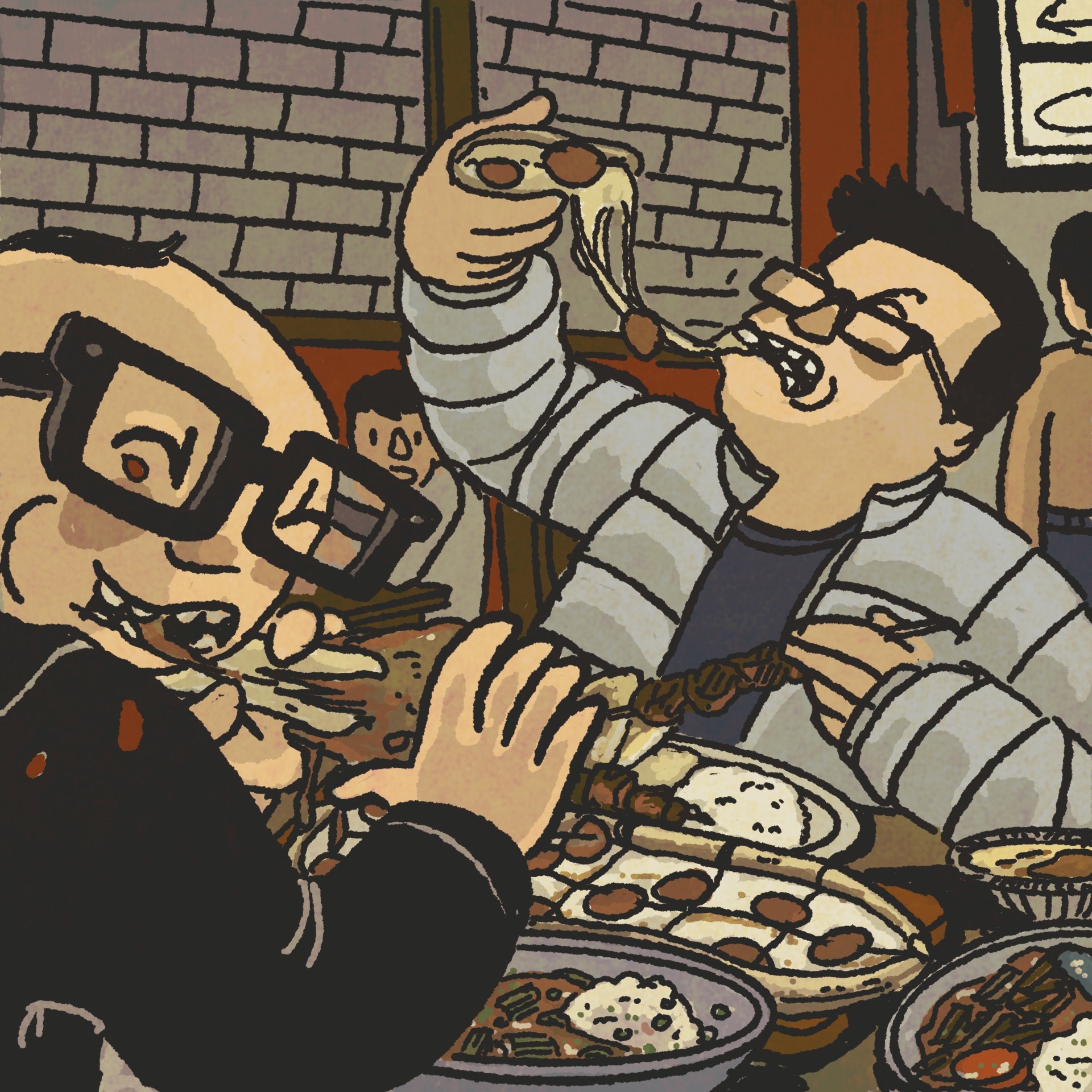
The Midnight Diners is a regular collaboration between KQED food editor Luke Tsai and artist Thien Pham. Follow them each week as they explore the hot pot restaurants, taco carts and 24-hour casino buffets that make up the Bay Area’s after-hours dining scene.
Even with its handful of bustling dive bars and lounges, Downtown Livermore probably isn’t ever going to be known as an after-hours hotspot. But for the past year, at least, Livermoreans who get hungry after 11 o’clock at night have had at least one place — Sultan’s Kebab — where they can go to satisfy their cravings for shawarma, kebabs and, most spectacularly, hot, cheesy Turkish flatbreads.
At least that was how it seemed on a recent Friday night, when the casually chic counter-service restaurant only seemed to get busier and busier after 10 p.m. Every booth and table was filled with groups of friends, young couples on dates, even families with small children (no judgment!). By the time we left, it felt like every person in Livermore who was still awake must have been sitting down for a meal at Sultan’s.
Since the original Pleasanton storefront debuted in 2010, the restaurant has expanded into a mini sultanate, if you will, with three kebab shop locations spread across the sleepy Tri-Valley suburbs. With its sleek bar counter, fire-engine red interior and faux wisteria tree (in glorious, faux full bloom) overhanging the entrance, the year-old Livermore location is the fanciest-looking of the three — and the only one that’s open late enough to qualify as a late-night restaurant.
Sultan’s Kebab is a Turkish restaurant that markets itself as “Mediterranean” — which, in contemporary American restaurant parlance, largely functions as a way for immigrant chefs to make their food businesses palatable when they aren’t sure how comfortable customers will be with dining at an establishment that’s explicitly Afghan, Palestinian or Iranian. For most diners, it’s just shorthand for the fact that you’ll probably find hummus and some kind of kebab on the menu.

At a place like Sultan’s, though, it really is possible to see the throughline between cuisines as seemingly disparate as Turkish and Italian — say, in the mild and delectable braised lamb shank, with its rich gravy studded with strands of celery, a dish which, if you look at it a little sideways, doesn’t look or taste so different from the osso buco served at your local homestyle Milanese spot. You can even see it in the Iskender kebab: thin slices of spit-roasted lamb and crunchy pita, all tossed in tomato sauce and served alongside a massive pool of yogurt. Sultan’s is the most “marinara” version of the dish I’ve ever eaten — so sweet and saucy, it wouldn’t feel out of place at my favorite red-sauce Italian joint.

